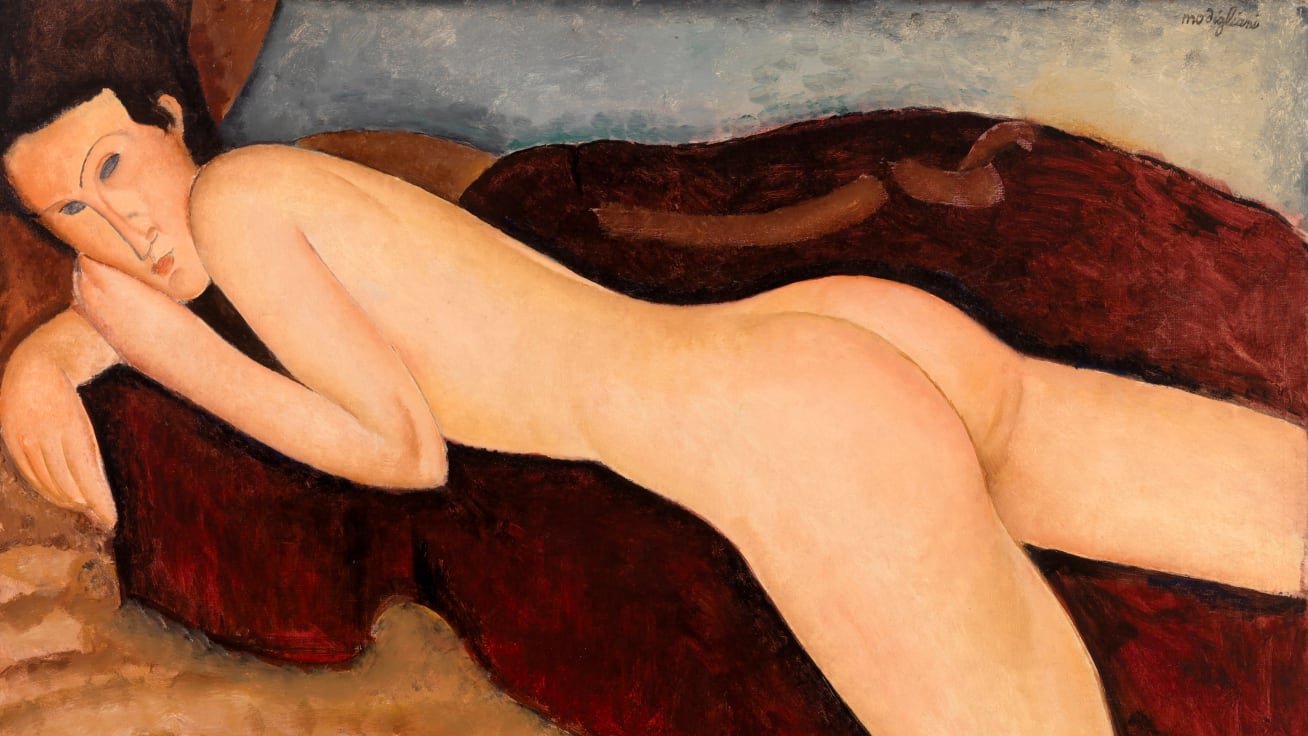Major Modigliani show sheds new light on how artist worked

More than a century after the death of Amedeo Modigliani, a consortium of art historians and conservation experts convened by the Barnes Foundation in Philadelphia is discovering hidden aspects of the artist's techniques thanks to new research and analytical technologies.
Classically trained in his native Italy, Modigliani was one of many young artists who converged on Paris in the early 1900s. But the avant-garde achievements of his short career have long been overshadowed by his bohemian life story. Nicknamed "Modi," a pun on "maudit" the French word for "cursed," he was involved in a series of turbulent love affairs, lived in a state of poverty, struggled with alcoholism and substance abuse, and died of tuberculosis aged just 35.
But Modigliani's chaotic reputation belies a stylistically restrained and highly skilled body of work. "Modigliani Up Close," a major exhibition opening this month at the Barnes Foundation in Philadelphia, sets out to deconstruct the myth and dissect the artist's working methods. The institution's founder, Albert C. Barnes, was an early patron of the artist, collecting the first pieces in 1922, the year he chartered his foundation.
Unusually, the show of over 60 works is organized by art historians and conservators working in tandem: The Barnes' chief curator Nancy Ireson and senior director of conservation Barbara Buckley are joined by consultant curator Simonetta Fraquelli as well Tate London's paintings conservator Annette King.
The project, involving 28 institutions and a handful of private lenders, builds on a smaller study originally carried out between 2017 and 2018 for Tate Modern's Modigliani survey exhibition, co-curated by Ireson and Fraquelli. It also incorporates findings from a 2018-21 study of all the artist's paintings and sculptures in French public collections.
"There is still so much to learn about Modigliani as an artist," said Ireson, who spearheaded the exhibition after moving from the Tate to the Barnes in 2018, in an interview with The Art Newspaper. It is unclear what happened to the contents of his studio after Modigliani's death, and he left behind no writings describing his creative process. "There's a lot of conjecture and myth-making, but actually when you start to look at the physical works themselves, they offer a challenge to some of the storytelling."
A common misconception is that Modigliani's signature style of simplified, elongated figures never changed. "Modigliani only painted four landscapes," King noted in a joint interview with Buckley. "He specialized in portraits, but in a way it's even more fascinating to see how he evolves as an artist with this one subject matter."
What lies beneath
The show opens with the works Modigliani created after first arriving in Paris, during which he often made use of old canvases, painting over both his own rejected compositions and the work of others. New X-ray analysis uncovered three previously unknown sketches beneath the double-sided 1908 work "Nude with a Hat/Maud Abrantès" at the University of Haifa's Hecht Museum. French conservators also found six underlying paintings in "Antonia," made around 1915, prompting the theory that wartime constraints forced the impoverished artist to repurpose canvases, rather than paint on fresh ones.
Hidden Van Gogh self-portrait found behind another painting
But this new research suggests Modigliani's destitution was not the only motivation. Modigliani earned 500 francs for his first portrait commission, 1909's "Jean-Baptiste Alexandre with a Crucifix," yet chose to compose the work on an old canvas. For "The Pretty Housewife," painted six years later, he worked in thin layers that fused the sitter's skin tone and wicker basket with the colors and textures of the underlying paintings. "It's a very resourceful way of working," Ireson said.
-cnn







